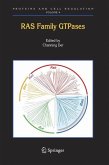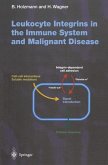The Rho GTPases were first discovered due to their homology to Ras GTPase. Approximately 30% of human cancers harbor an activating mutation to Ras, and Ras mutations promote cell growth and survival. Due to their homology to Ras, great enthusiasm has ensued over the discovery of the Rho GTPases. It was thought that activating mutations, similar to what is seen in Ras, would be found in the Rho proteins and would account for a proportion of human cancers that did not harbor Ras mutations. After an intense survey of multiple human cancer specimens, no evidence of activating mutations were found. Instead, overexpression of Rho proteins and aberrant activation were found to be common. Aberrant activation of Rho GTPase is found to be caused by alterations in the activity of upstream Rho-regulatory proteins. Since their discovery, 22 human Rho proteins have been identified and several have been shown to be involved in cancer progression. In contrast to Ras and its closely related members, Rho proteins act as dynamic switches to alter the actin cytoskeleton. Because of this, these proteins regulate nearly all aspects of cell physiology including growth, polarity and migration. Thus, they are very important molecules in cancer biology and constitute potential and desirable therapeutic targets.
The roles and importance of the Rho GTPases in cancer is just really becoming to be appreciated and the amount of new information gathered over the past 5 years has been staggering. However, there currently is no comprehensive source of information for Rho biology. Therefore, this volume could be very timely and of great interest.
Channing Der and colleagues provide an encyclopedic overview of the Rho GTPases, providing enough detail to make any reader well-versed in the Rho field. Finally, Sofia Merajver's laboratory provides an overview, which details the roles of the Rho proteins in cancer progression. She provides us with the history of the study of the Rho GTPases, their regulatory and effector proteins in cancer and gives us a benchmark of where the field is today. The second section of the book details the current knowledge of the Rho regu- tory proteins in cancer progression: aberrant expression and activation of these proteins leads to dysfunctional Rho signaling and a cancer phenotype. Gary Bokoch's laboratory has provided a detailed overview of the role of Rho guanine dissociation inhibitors (GDIs) in cancer. These molecules are involved in preventing the Rho protein from associating with the inner plasma membrane and exchanging GDP for GTP, and thus becoming active. Next, Tozu Kazasa's labo- tory has worked on the link between heterotrimeric G proteins and Rho activation via the RGS-RhoGEFs. This aspect of Rho activation is particularly interesting in that heterotrimeric G proteins and their associated G-protein-coupled receptors are attractive and attainable therapeutic targets. Dan Billadeau's laboratory has worked extensively on the Vav RhoGEFs, which are potent oncogenes in their own right.
The roles and importance of the Rho GTPases in cancer is just really becoming to be appreciated and the amount of new information gathered over the past 5 years has been staggering. However, there currently is no comprehensive source of information for Rho biology. Therefore, this volume could be very timely and of great interest.
Channing Der and colleagues provide an encyclopedic overview of the Rho GTPases, providing enough detail to make any reader well-versed in the Rho field. Finally, Sofia Merajver's laboratory provides an overview, which details the roles of the Rho proteins in cancer progression. She provides us with the history of the study of the Rho GTPases, their regulatory and effector proteins in cancer and gives us a benchmark of where the field is today. The second section of the book details the current knowledge of the Rho regu- tory proteins in cancer progression: aberrant expression and activation of these proteins leads to dysfunctional Rho signaling and a cancer phenotype. Gary Bokoch's laboratory has provided a detailed overview of the role of Rho guanine dissociation inhibitors (GDIs) in cancer. These molecules are involved in preventing the Rho protein from associating with the inner plasma membrane and exchanging GDP for GTP, and thus becoming active. Next, Tozu Kazasa's labo- tory has worked on the link between heterotrimeric G proteins and Rho activation via the RGS-RhoGEFs. This aspect of Rho activation is particularly interesting in that heterotrimeric G proteins and their associated G-protein-coupled receptors are attractive and attainable therapeutic targets. Dan Billadeau's laboratory has worked extensively on the Vav RhoGEFs, which are potent oncogenes in their own right.








